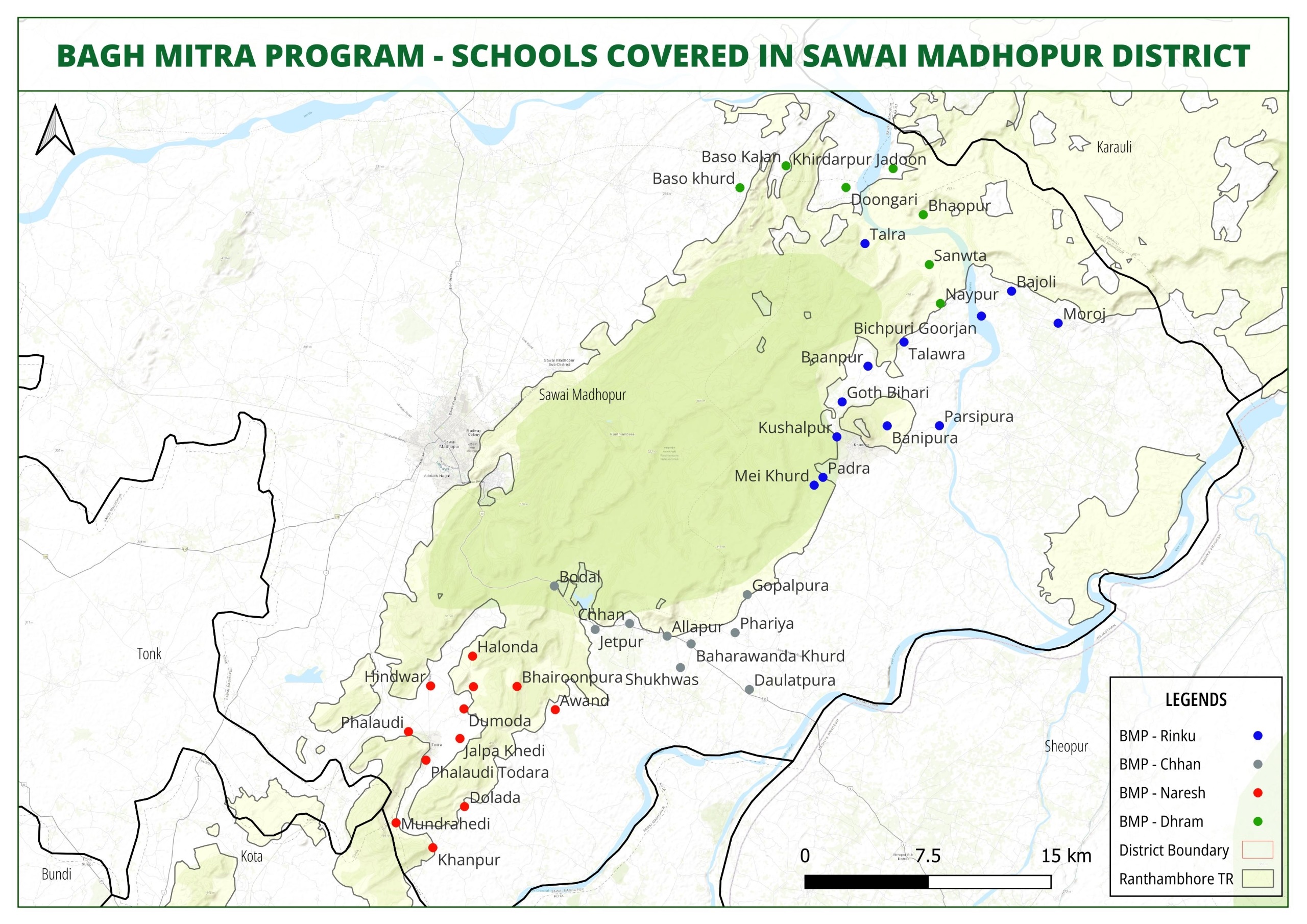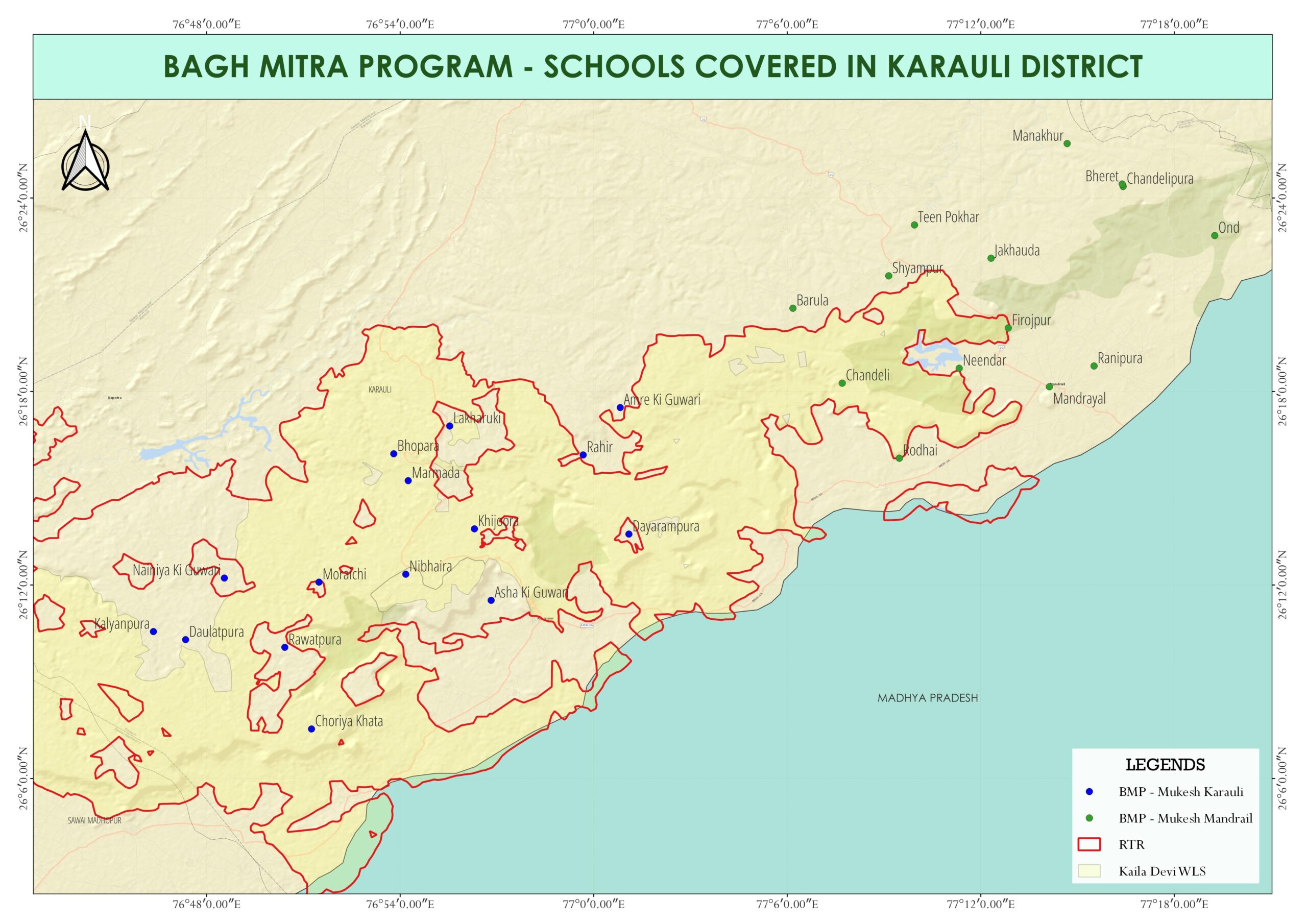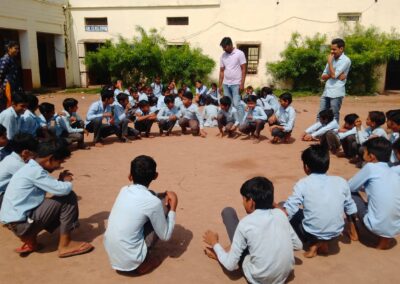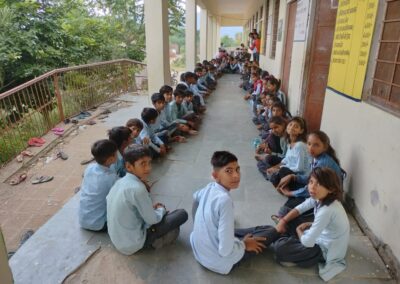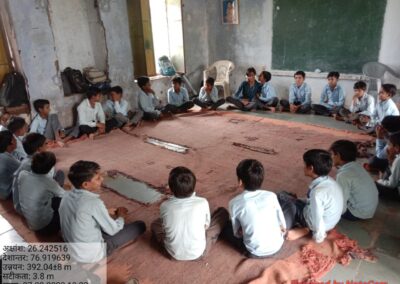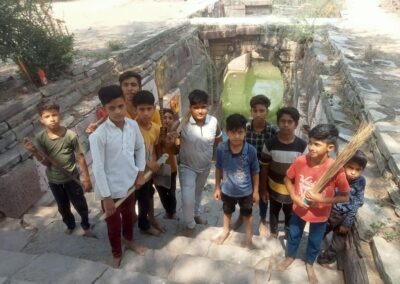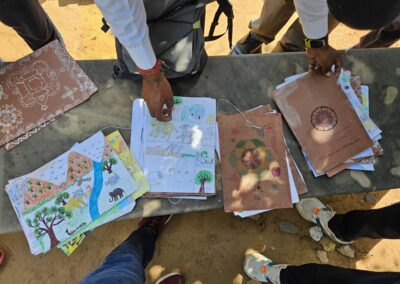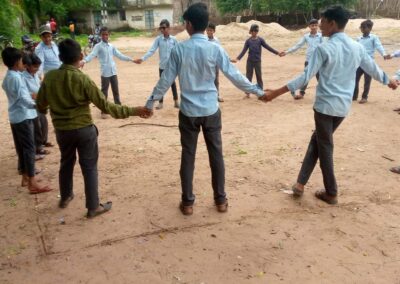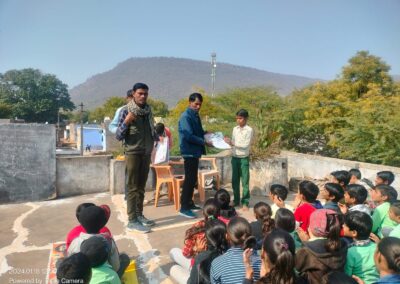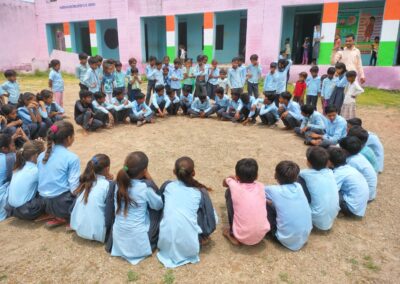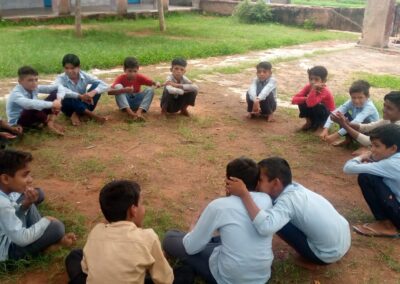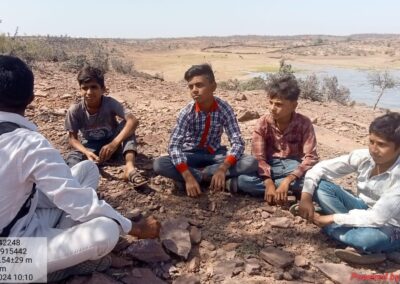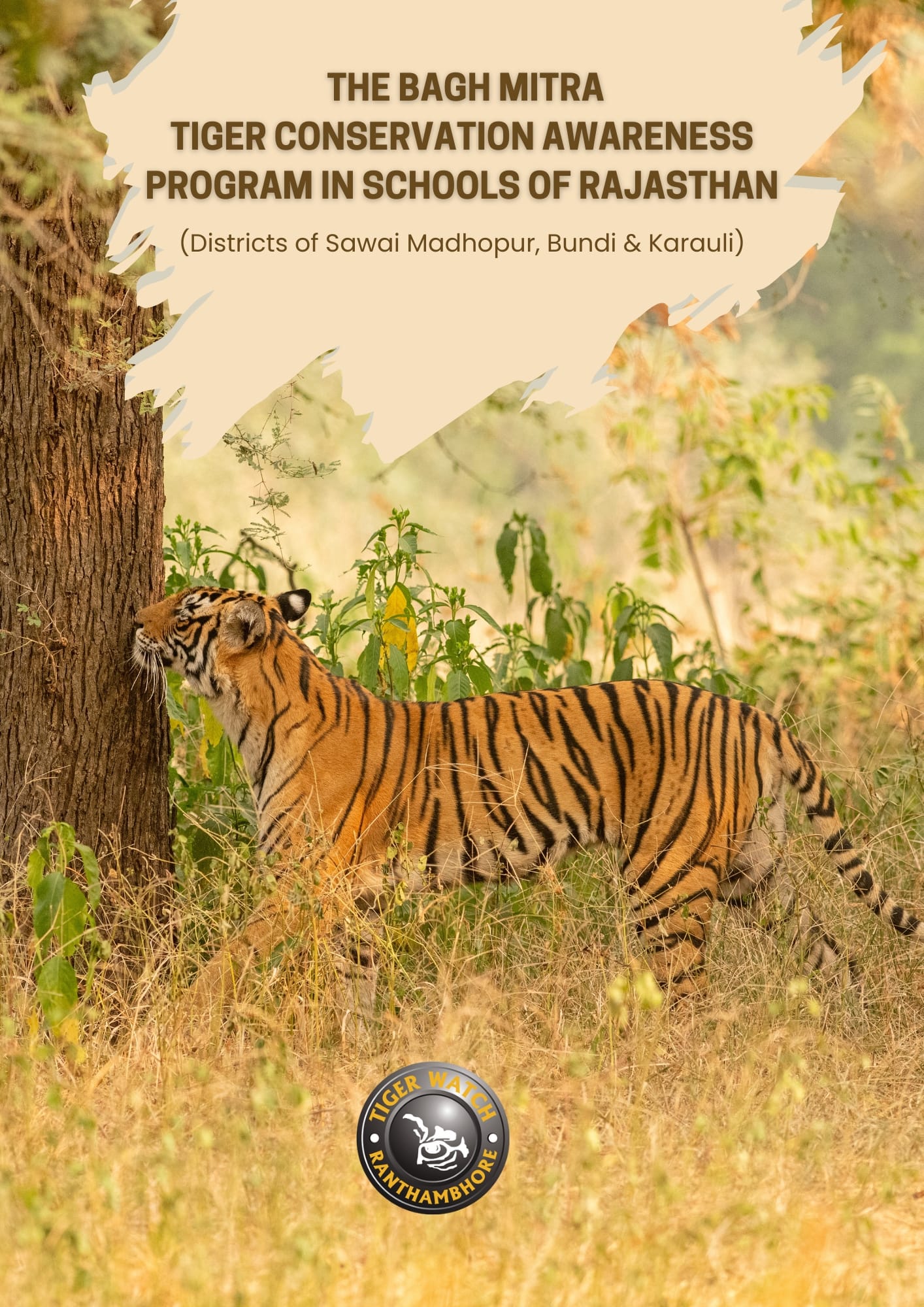Bagh Mitra Tiger Conservation Awareness
Increasing anthropogenic pressure on Ranthambhore and Ramgarh Tiger Reserves and limited awareness facilities called for us to sensitise the younger generation of the communities in the area.
Anthropogenic pressure is the primary long-term threat to tigers and their habitat. Villagers living near tigers tend to view them negatively.
Connecting the children described above to their location and context meaningfully and preparing them to act and participate in future wildlife conservation interventions is of the utmost importance for the long-term well-being of both the Ranthambhore and Ramgarh Tiger Reserves.
Tiger Watch aims to reduce human-tiger conflict by working with school-going students of Sawai Madhopur, Bundi, and Karauli districts in the heart of tiger habitat in Ranthambhore and Ramgarh Vishdhari Tiger Reserves through the Bagh Mitra Tiger Conservation Awareness Program. The program in the Sawai Madhopur district is part of the Dieter & Liz Gutmann Tiger Conservation Program. Petronet LNG Pvt. Ltd. supports the program in the schools in the Bundi and Karauli districts.
The program is designed to dispatch mobile teams of teachers to cover environmental topics in village schools, covering different components essential for raising awareness among the youth both inside and outside the classroom. The program has been running for two years in the Sawai Madhopur district and employs a team of 4 teachers impacting 60 schools. The program has completed one year in the Bundi and Karauli districts as a separate chapter and employs a total of 5 teachers and directly impacts 75 schools in these two districts cumulatively.
Project Locations
Gallery
Reports
Key Highlights of 2024-25
Conservation Education:
73 Bagh Mitra Clubs were established, involving students and villagers in activities like clean-up drives, bird feeding, and conservation discussions.
Classroom sessions covered 15 environmental topics, including biodiversity, tiger conservation, water conservation, and ecosystem awareness.
Community Engagement:
8 Bagh Melas (Tiger Fairs) were organized, attracting 300-500 participants per event through exhibitions, quizzes, and wildlife-themed competitions.
Over 6,500 students participated in drawing competitions and 2,500 in Mandana art competitions, promoting conservation through creativity.
Teachers underwent specialized training on biodiversity, field techniques, and interactive teaching methods.
Impact & Achievements:
1,000 bird water feeders were installed to aid avian conservation.
1000+ native plants were nurtured and distributed for reforestation efforts.
Nature walks, heritage site visits, and interactive conservation games were integrated into school activities.
With growing community participation, the Bagh Mitra Program continues to strengthen conservation awareness and sustainable practices, ensuring a lasting impact on Rajasthan’s biodiversity.
For more details, Check the Complete Report.
Supported By


Address:
Maa Farm,
Ranthambhore Road,
Khilchipur, Sawai
Madhopur, Rajasthan,
India - 322 001
Phone: (+91) 90015 07777

